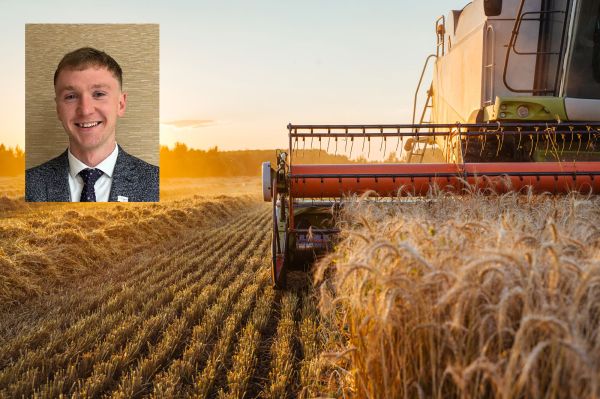Weather impact on Mycotoxin risk

Mycotoxins, which are natural substances produced by certain moulds and fungi, can cause considerable damage to animal health and performance when present in feed. This hidden danger is more prevalent – and more of a problem in agriculture – than ever before, largely because of weather extremes and other factors related to climate change.
More than 95 per cent of crops today are contaminated with at least one mycotoxin, and usually with two or more. Because these toxins are difficult to detect, being odourless, colourless and invisible to the naked eye, they can often cause serious problems even before producers realise they are present.
Because an effective mycotoxin management plan must pinpoint current risks, animal producers and those in the feed industry need the most timely and accurate mycotoxin data and insights to act effectively against this threat.
The Alltech European Harvest Analysis
Each year, Alltech tests thousands of new crop grain and forage samples to obtain the most up-to-date data on mycotoxin contamination patterns across the continent and specific to regions, crops and animal species. The samples are tested at the state-of-the-art Alltech 37+ lab in Dunboyne, which can detect 54 individual mycotoxins. Corn samples from central and southern Europe are also tested in collaboration with SGS, a global leader in mycotoxin testing and certification. Alltech’s experts then analyse the findings and release a free and comprehensive report. This programme is called the Alltech European Harvest Analysis.
Alltech released some preliminary findings, with early, detailed and actionable insights about this year’s mycotoxin risks in newly harvested grains and forages. These insights are intended to help farmers and feed producers stay ahead of the mycotoxin threat.
Interim findings
The interim report showed moderate to high mycotoxin risk so far in 2024, with significant regional variations. This is similar to the results seen at the same time last year. Type B trichothecenes and emerging mycotoxins are most prevalent, but Type B trichothecenes like deoxynivalenol are bringing the greatest risk in grains.
Increasing weather fluctuations continue to be a major contributor to today’s rising mycotoxin risks, which vary widely by region. For example, early-season rains and floods followed by late-season droughts have created distinct challenges for crop producers this year across Central and Southeastern Europe. Some countries, including Hungary, Serbia, Romania and Bulgaria, are showing high levels of aflatoxin B1 in corn grain samples, with concentrations of up to 566 parts per billion (ppb).
“This year’s weather in Europe has been extreme and unpredictable, which has been reflected in the behaviour of moulds and the production of mycotoxins. The mycotoxin risk for all animal species is medium to high, and for some mycotoxins, such as aflatoxin B1, even extremely high,” said Dr Radka Borutova, global technical support for the Technology Group at Alltech. “The application of effective mycotoxin management is the only way to break this deadlock.”
Other key (interim) results
Wheat and barley
Wheat samples analysed from Europe are averaging 7.7 mycotoxins per sample, with 99 per cent of samples containing multiple mycotoxins. Barley samples show an average of 6.3 mycotoxins, with 98 per cent of samples containing multiple mycotoxins. The most prevalent mycotoxins in both wheat and barley are emerging mycotoxins and Type B trichothecenes. The overall risk for both barley and wheat is moderate.
Straw
For straw, samples tested so far show an average of 5.9 mycotoxins per sample, with 91 per cent of samples containing multiple mycotoxins. The most prevalent are emerging mycotoxins and deoxynivalenol, with the overall mycotoxin risk deemed to be high in straw. Therefore, caution should be taken when using straw for bedding material, as a feed ingredient or as a form of enrichment.
Forages
For grass and maize silage, the preliminary findings show 2.9 mycotoxins per sample on average, with 68 per cent of samples containing multiple mycotoxins. The most prevalent are Type B trichothecenes and Penicillium mycotoxins such as penicillic acid, mycophenolic acid and patulin. Although the number of mycotoxins detected per sample is low (2.9 on average), the overall risk in this year’s silages is high, due to the high concentrations of penicillium mycotoxins present.
From Field to Feed
Alltech recently hosted ‘From Field to Feed: 2024 Crop and Mycotoxin Analysis’, a live broadcast streamed from its headquarters in Lexington, Kentucky, during which expert panelists shared valuable insights to managing risks across the supply chain. Here are some of the key takeaways:
Test and monitor
Regularly test crops and feed to understand what’s present and to ensure high quality.
Leverage weather data
Pay attention to weather patterns and farm-specific conditions to assess potential risks early.
Use comprehensive information
Gather unbiased data from all aspects of your operation and tailor it to fit your specific needs.
Combine methods
Utilise both traditional techniques and new technologies to refine processes and ensure optimal feed quality.
Be proactive
If mycotoxins are present, be proactive with management to ensure high-quality feed production, thus protecting animals and safeguarding the operation’s resilience and success.
The use of a dietary mycotoxin binder, such as Mycosorb A+ from Alltech, was recommended to mitigate the impact of these invisible threats on health, productivity and profitability.
On completion of all testing and analysis, the full Alltech 2024 European Harvest Analysis report is released (this happened in December after this article was written), giving a complete and detailed breakdown of key results by region, crop and species.
You can register online at
alltech.com/harvest-analysis to access the full analysis programme.





